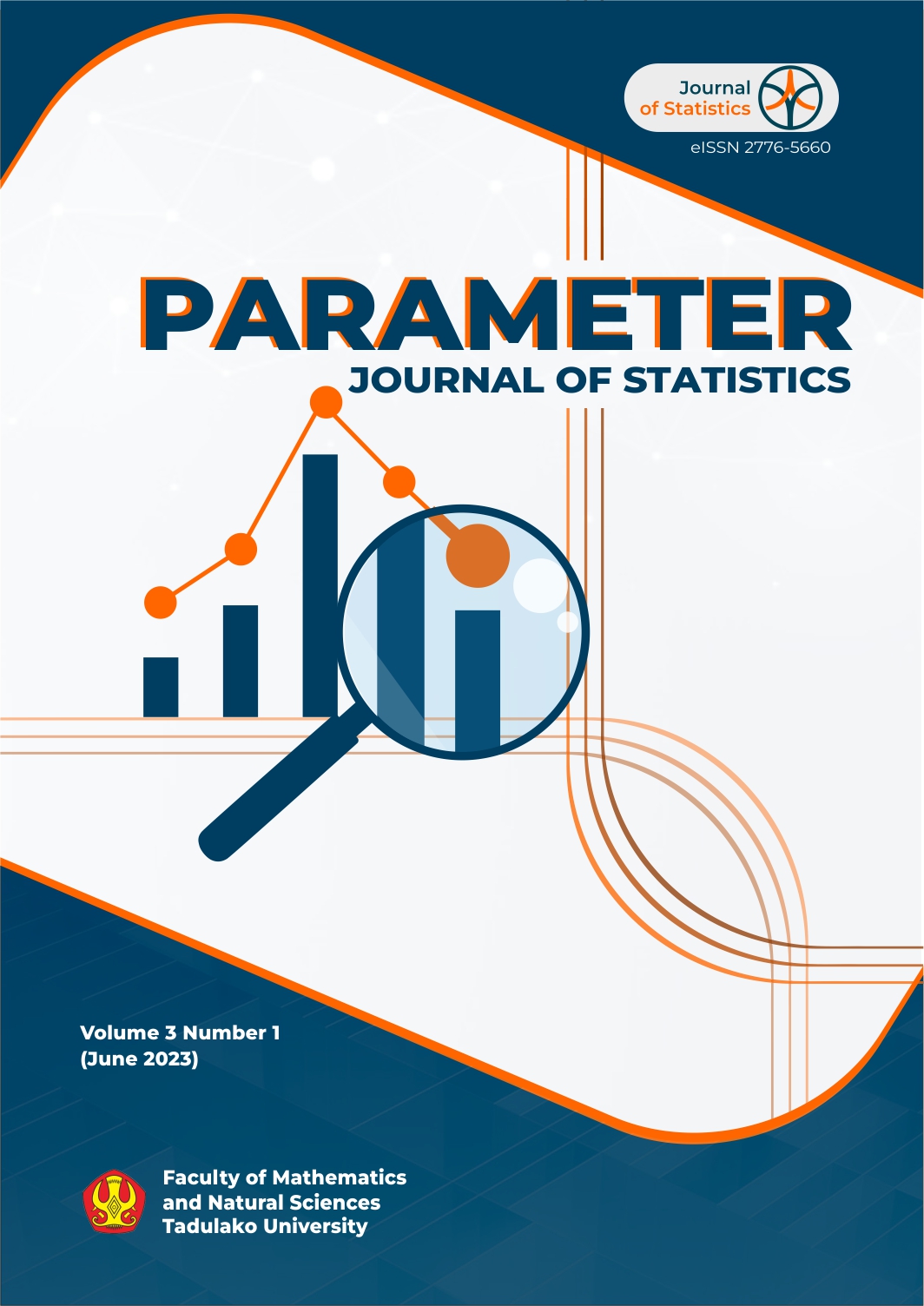Main Article Content
Abstract
Poverty is an enormous problem in numerous nations including Indonesia. Poverty can be measured using several indicators, including the unemployment rate, the percentage of poor people, expenditures per capita, and the poverty line. The purpose of this study is to categorize Indonesian provinces based on poverty indicators in 2021 using K-Means with the Silhouette Coefficient approach. Based on the silhouette coefficient approach, there are two clusters that are created. The first cluster is a high-poverty-rate regional group that includes the provinces of Aceh, Bengkulu, West Nusa Tenggara, East Nusa Tenggara, Central Sulawesi, Gorontalo, Maluku, West Papua, and Papua. On the other hand, the second cluster is an association of regions with a low poverty rate, and it includes 25 provinces. The greater number of provinces in the low poverty rate cluster implies that the poverty rate in Indonesia in 2021 is included in the low category
Keywords
Article Details

This work is licensed under a Creative Commons Attribution-ShareAlike 4.0 International License.
References
- Agarwal, S. (2013). Data Mining: Data Mining Concepts and Techniques. 2013 International Conference on Machine Intelligence and Research Advancement, 203–207. https://doi.org/10.1109/ICMIRA.2013.45
- Aprilia, K., & Sembiring, F. (2021). Analisis Garis Kemiskinan Makanan Menggunakan Metode Algoritma K-Means Clustering. Seminar Nasional Sistem Informasi Dan Manajemen Informatika, 1–10.
- BPS. (2021). Keadaan Ketenagakerjaan Indonesia Agustus 2021. BPS.
- Dwitri, N., Tampubolon, J. A., Prayoga, S., R.H Zer, F. I., & Hartama, D. (2020). Penerapan Algoritma K-Means Dalam Menentukan Tingkat Penyebaran Pandemi Covid-19 Di Indonesia. Jurnal Teknologi Informasi, 4(1), 128–132. https://doi.org/10.36294/jurti.v4i1.1266
- Fathia, A., Rahmawati, R., & Tarno, R. (2016). Analisis Klaster Kecamatan Di Kabupaten Semarang Berdasarkan Potensi Desa Menggunakan Metode Ward Dan Single Linkage. Jurnal Gaussian, 5(4), 801–810.
- Febianto, N. I., & Palasara, N. (2019). Analisa Clustering K-Means Pada Data Informasi Kemiskinan Di Jawa Barat Tahun 2018. Jurnal Sisfokom (Sistem Informasi Dan Komputer), 8(2), 130–140. https://doi.org/10.32736/sisfokom.v8i2.653
- Izzadin, F. (2020). Optimasi Jumlah Cluster K-Means dengan Metode Elbow dan Silhouette Pada Produktivitas Tanaman Pangan di Provinsi Jawa Tengah Tahun 2018. Liquid Crystals, 21(1).
- Kassambara, A. (2017). Practical Guide to Cluster Analysis in R: Unsupervised Machine Learning (1st ed.). STHDA.
- Rahman, A., Wiranto, & Anggrainingsih, R. (2017). Coal Trade Data Clusterung Using K-Means (Case Study PT. Global Bangkit Utama). ITSMART: Jurnal Ilmiah Teknologi Dan Informasi, 6(1), 24–31.
- Setiawan, D., & Zahra, A. (2023). Pengelompokan Kemiskinan di Indonesia Menggunakan Time Series Based Clustering. Inferensi, 6(1), 83. https://doi.org/10.12962/j27213862.v6i1.14969
- Talakua, M. W., Leleury, Z. A., & Taluta, A. W. (2017). Analisis Cluster Dengan Menggunakan Metode K-Means Untuk Pengelompokkan Kabupaten/Kota Di Provinsi Maluku Berdasarkan Indikator Indeks Pembangunan Manusia Tahun 2014. Barekeng: Jurnal Ilmu Matematika Dan Terapan, 11(2), 119–128. https://doi.org/10.30598/barekengvol11iss2pp119-128
